German "Maxim" for the Ottoman Empire
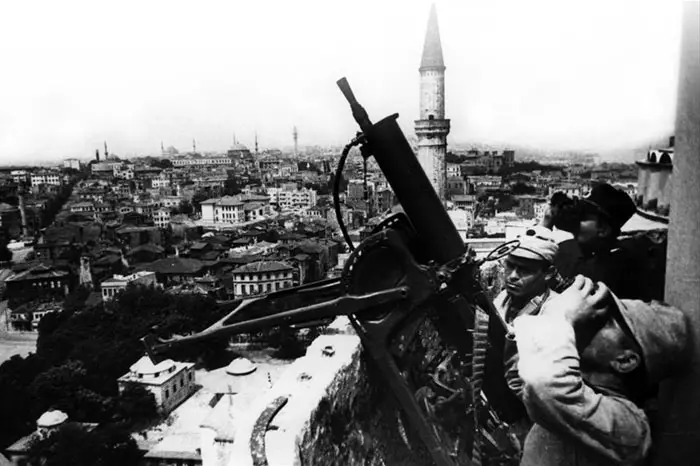
Hardly in the world stories there is a more famous machine gun than the brainchild of Hiram Maxim. Born back in the 19th century, he will go through all the major military conflicts of the 20th century, fight on all continents and seas and change the image of war forever. Poems and songs will be dedicated to him, and his image will remain on many monuments around the world.
Of course, such a success of the Maxim led to the existence of a large number of different versions of this weapon, although they did not differ from the original in mechanics, but were curious in appearance. And today we will look at the version produced in Germany for the Ottoman Empire before the outbreak of the First World War.
At the end of the 1889th and beginning of the XNUMXth centuries, the Germans were among the first to consider both the military and commercial potential of the Maxim machine gun, starting the first tests back in XNUMX.
Already in 1892 armory Ludwig Lewe's company acquires a license for the production of machine guns, which enter limited service with the German fleet, and in 1896 the company Deutsche Waffen und Munitionsfabriken (DWM) was founded, one of the important tasks of which was the production of Maxims for export.
In the early 1900s, DWM produced its MG-01 machine gun quite en masse at the request of many countries, including Austria-Hungary, Argentina and Switzerland, and even produced about 2 machine guns in 000x7,62R caliber for the Russian Empire.
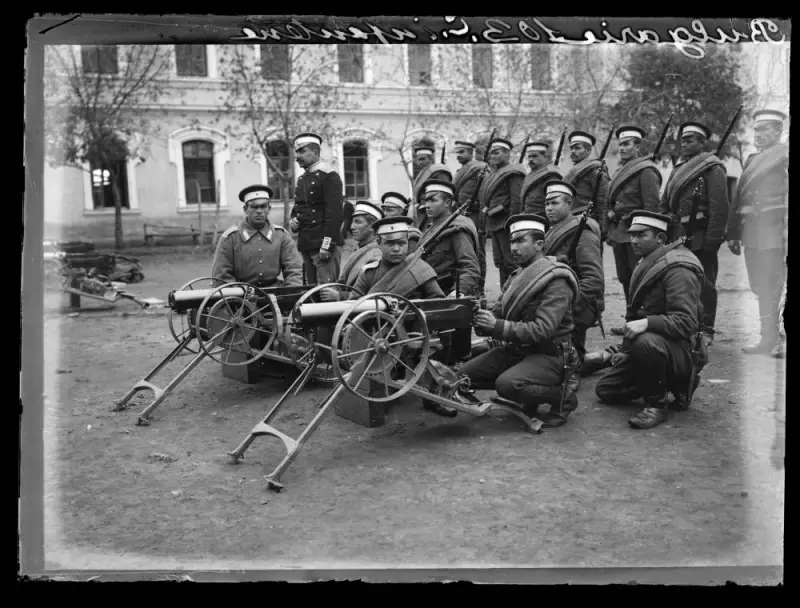
Bulgarian infantry with MG-01 machine guns
By 1908, based on the experience of the Russo-Japanese War and use by the troops, the Germans began producing a new, modernized model - MG-08.
Arabic stamp
The Turks immediately became interested in the new model of machine gun. The influence of the Kaiser's Germany in the Ottoman Empire also extended to the army, and they already had experience of cooperation with German arms manufacturers - since 1887, Turkish troops had already been armed with various Mauser rifles.
However, the Turkish order had a significant feature - all markings, designations and numbers had to be in Arabic, not only on the machine gun itself, but also on the machine. To be fair, Mauser rifles and ammunition made in Germany were also branded in a similar way.
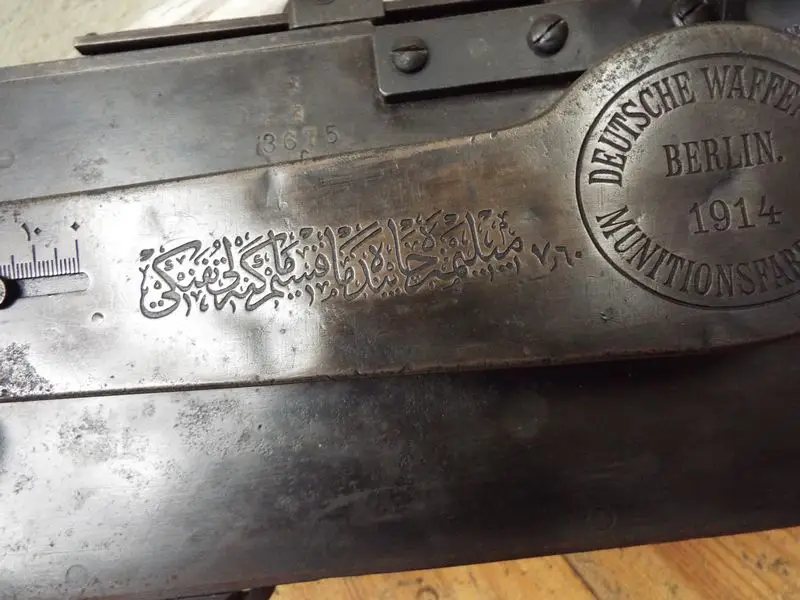
Manufacturer's mark, duplicated in Arabic script on a machine gun produced by DWM
Such branding gave the seemingly familiar machine gun a rather mysterious and exotic look.
It is curious that most of the marks were made in Nastallik calligraphic script, quite archaic for its time and difficult to read even for native speakers, and sometimes confusing researchers who defined the machine gun as “Persian.” However, we note that the ligature on the body and parts looks very beautiful and unusual.
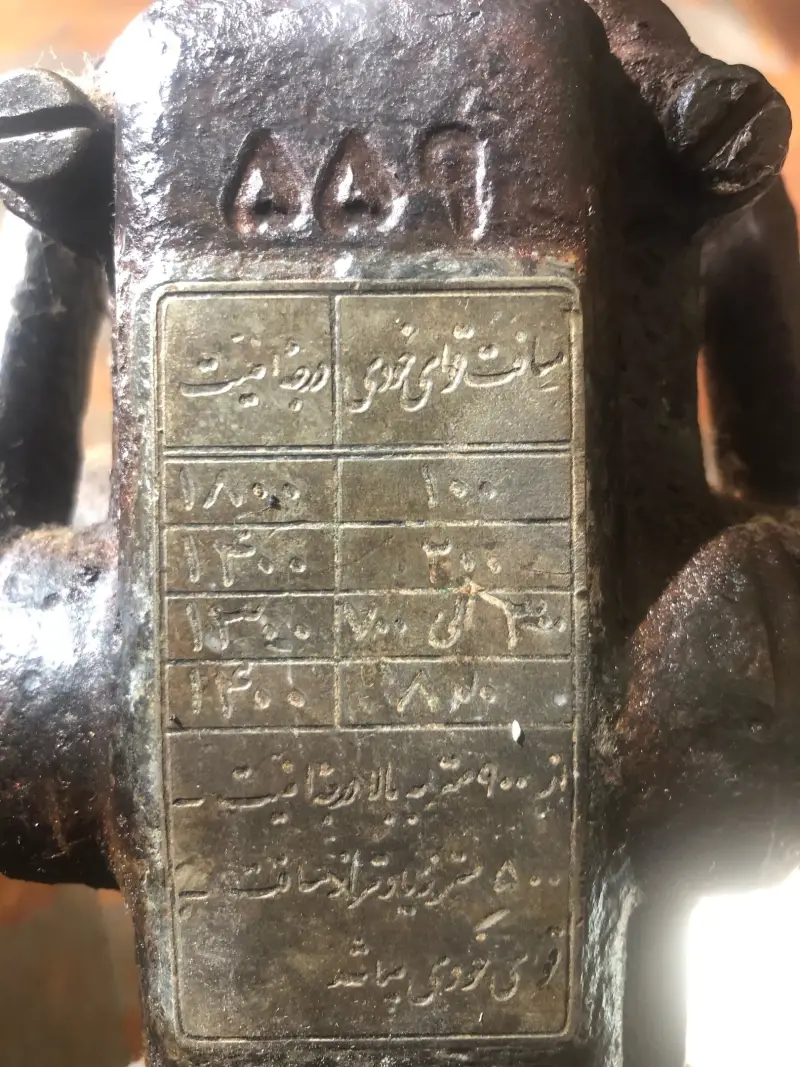
A plate on the vertical adjustment mechanism of a Turkish order tripod machine
At the same time, initially the volumes of purchases of machine guns by the Turks were small. During the Balkan War of 1912–1913, the Ottomans were armed with no more than 500 modern machine guns. However, Turkey's actual defeat in this war led to an increase in funding for weapons purchases.
By the beginning of the First World War, DWM managed to supply the Turkish army with a total of about 1 machine guns, which, of course, was a rather modest number in the framework of the coming war, but for the Turkish army it was a qualitative reinforcement.
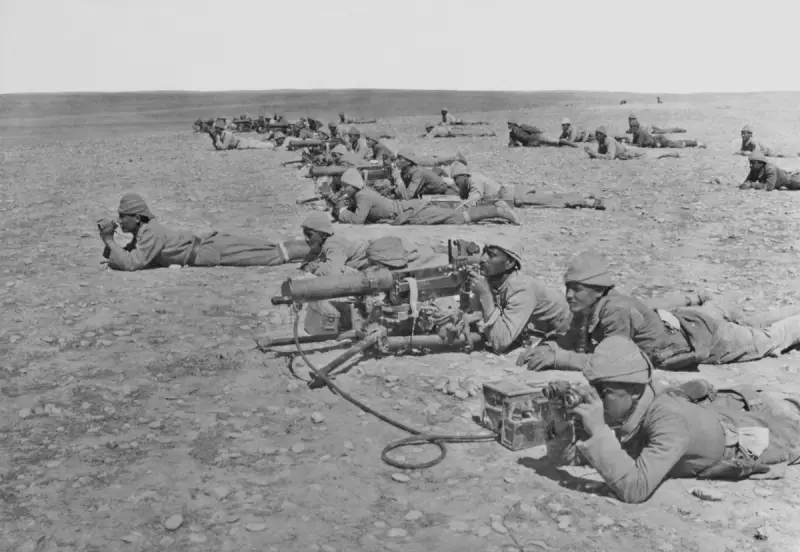
Turkish soldiers with MG-08 machine guns on tripods
A certain number of machine guns were supplied to the Turks after 1914, but the increase in the intensity of hostilities forced the Germans to significantly reduce the production of specifically marked “Turkish order” machine guns, and since 1915, some of the MG-08 sent to Turkey as allied aid had standard German markings.
Interestingly, like the Kaiser’s army, the Turkish used both types of machine for the MG-08 - both the sled and the tripod. Moreover, in both cases, all aiming mechanisms and machine parts were marked in Arabic. Researchers also know of examples of “hodgepodges,” when part of the parts or machine are marked in Arabic, and the rest with standard German markings, which is especially typical for machine guns of 1917–1918.
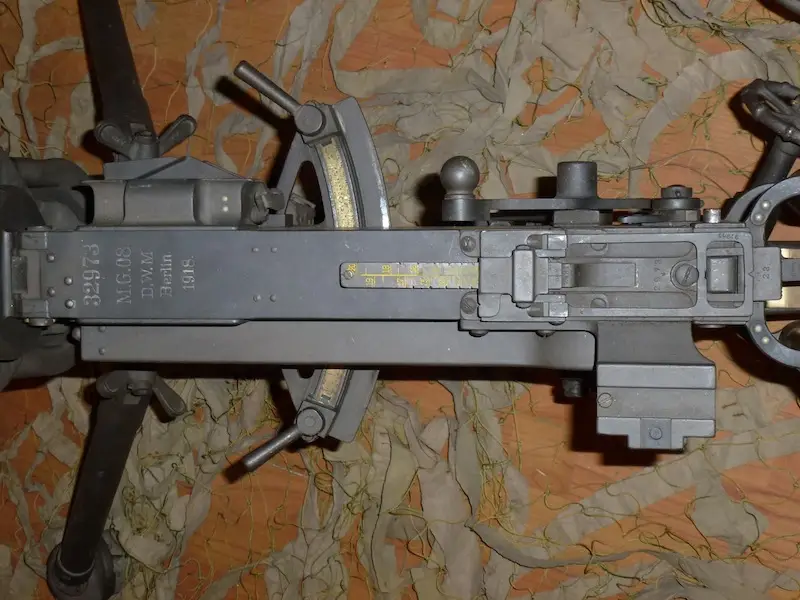
A machine gun with German markings on a Turkish machine in one of the museums in Turkey
There may be several reasons: either local arsenal repair of damaged machine guns using parts from several units and German spare parts, or the discovery at DWM facilities of a certain backlog of parts used for the production of new machine guns.
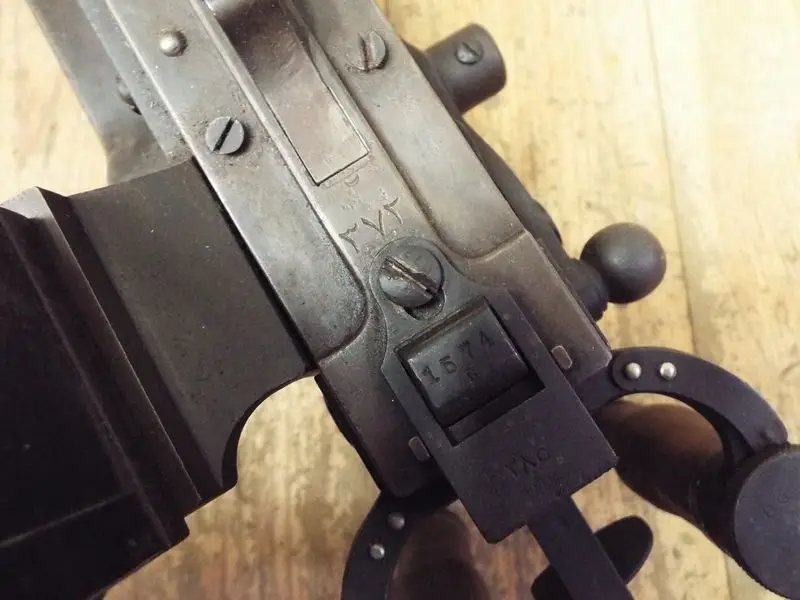
An example of the use of parts branded with a modern type of numbers on a machine gun originally branded in the traditional Turkish style
To date, not many machine guns of the Turkish order have survived, and most of those that have survived to this day are trophies of the First World War and are represented in whole or in fragmented form by museum exhibits in Russia, Britain and Australia.
The Ottomans used the MG-08 on all fronts, both in battles against the Allied forces and against the Russian Imperial Army. However, archaeological evidence shows that a small number of captured machine guns were likely used by the White Guards in southern Russia during the Civil War.

MG-08 machine guns on a sled at the minaret of Hagia Sophia in 1941
The machine gun served in the Turkish army until the end of World War II and for some time after it, but already in 1952, in connection with Turkey’s accession to NATO, the remaining machine guns began to be taken out of service. At the same time, most likely, due to high wear and tear, many of them were simply disposed of.
Thus ended the service of the Maxim machine guns with an oriental flavor that was unusual to our eyes.
Information